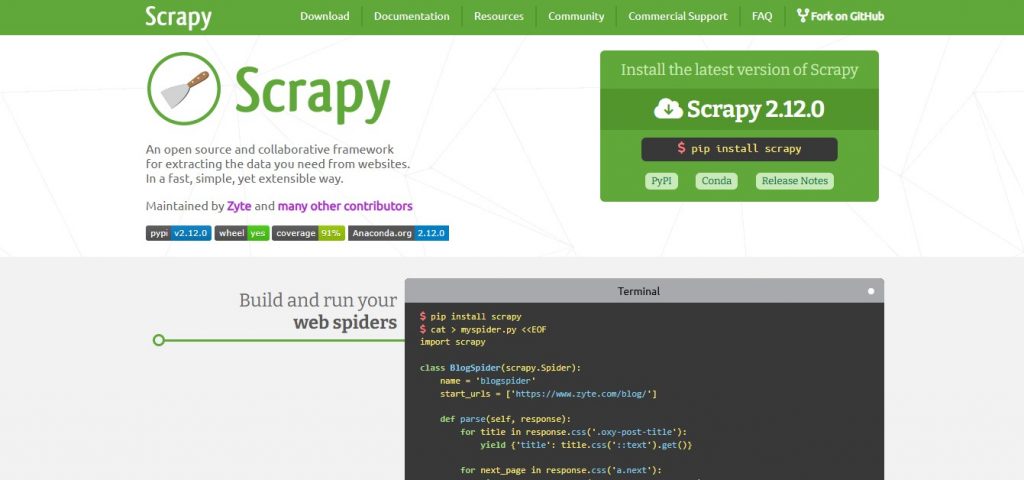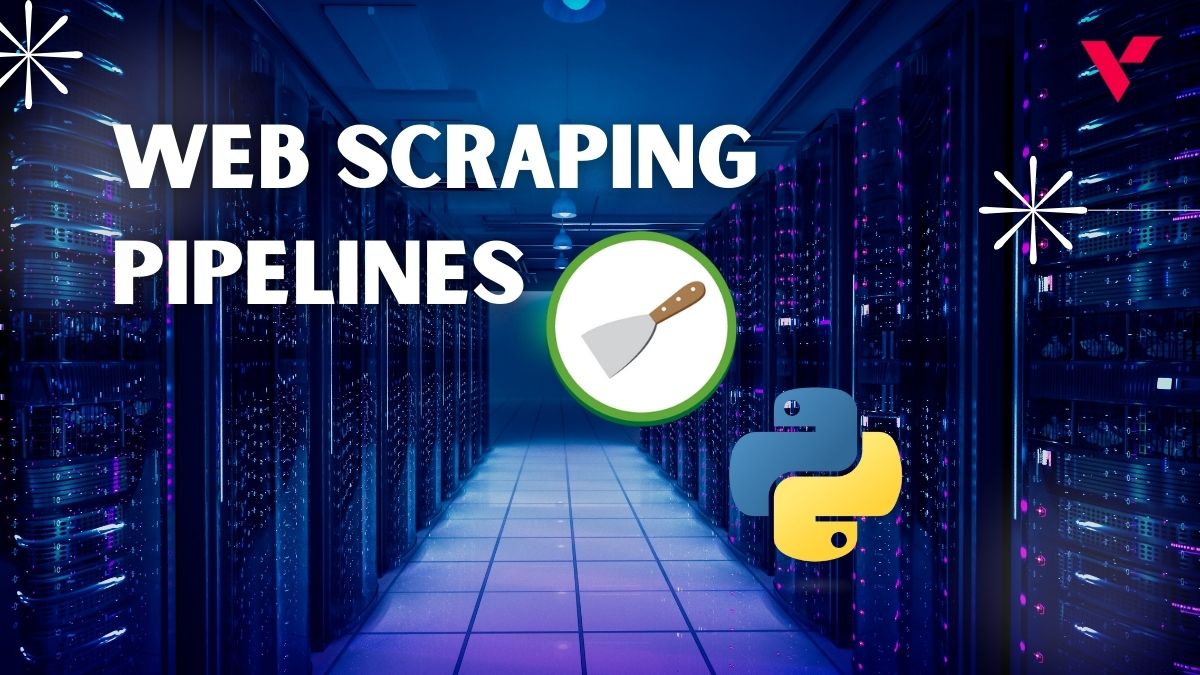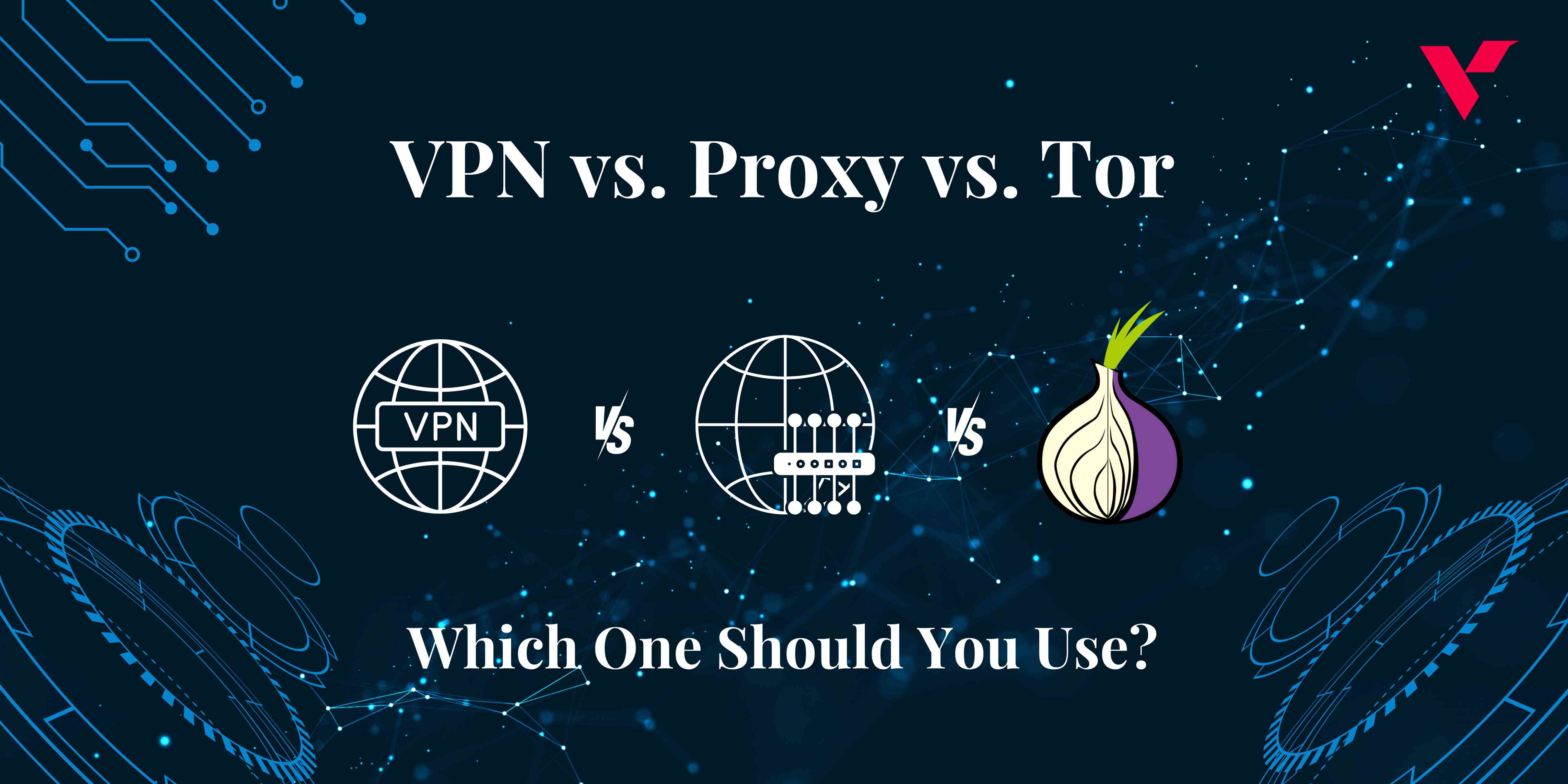Popular Tools by VOCSO
Web scraping has become an essential technique for extracting data from websites, but as data needs grow, the ability to scale efficiently becomes critical. Scalability ensures that a scraping pipeline in scalable web scraping can handle increasing workloads without failures, delays, or excessive resource consumption.
Python, along with Scrapy, offers a powerful framework for building scalable web scraping pipelines. Scrapy provides an asynchronous architecture, efficient data handling, and built-in support for exporting data in various formats. We will explore how to create a scalable web scraping pipeline using Python and Scrapy while optimizing performance, handling anti-scraping measures, and ensuring reliability.
Table of Contents
Challenges in Large-Scale Web Scraping
A small-scale scraper is easy to build, but scaling it up introduces challenges:
IP Bans & Rate Limiting – Websites block excessive requests
Dynamic Content – JavaScript-based sites require special handling
Data Cleaning & Storage – Extracted data needs structuring and storage
Scalability – Scrapers must process millions of pages efficiently
Integrating custom API development can help streamline data exchange between scraping systems and other applications, ensuring structured, real-time data flow.
Why Use Scrapy for Scalable Web Scraping?

Scrapy is a Python-based web scraping framework designed for large-scale data collection. It offers:
- Asynchronous request handling for high-speed scraping
- Built-in data pipelines to clean, validate, and store data
- Middleware support for handling proxies, user agents, cookies
- Auto-throttling to prevent bans and optimize performance
For seamless integration of scraped data into your systems, leveraging Backend Development can enhance data management, storage, and real-time processing capabilities. This ensures that large volumes of data are efficiently handled and accessible for business applications. Leveraging custom web development services can provide a user-friendly dashboard for managing and visualizing scraped data in real-time, enhancing control and monitoring capabilities.
Setting Up a Scrapy Environment
Installing Scrapy and Dependencies
To install Scrapy and related libraries, run:
pip install scrapy scrapy-rotating-proxies scrapy-selenium pandas psycopg2 pymongo requests lxml beautifulsoup4Creating a Scrapy Project
Initialize a new Scrapy project:
scrapy startproject scalable_scraper
cd scalable_scraperWriting a Scalable Scrapy Spider
A Scrapy Spider controls:
- Which pages to scrape
- How data is extracted
- How pagination is handled
Creating a Product Scraper
Navigate to spiders/ and create product_spider.py:
import scrapy
class ProductSpider(scrapy.Spider):
name = "products"
start_urls = ["https://example.com/products"]
def parse(self, response):
for item in response.css("div.product"):
yield {
"name": item.css("h2::text").get(),
"price": item.css("span.price::text").get(),
"url": response.urljoin(item.css("a::attr(href)").get()),
}
# Handling pagination
next_page = response.css("a.next::attr(href)").get()
if next_page:
yield response.follow(next_page, self.parse)Running the Scraper
Run the spider with:
scrapy crawl products -o output.jsonThis will save the extracted data in output.json.
Optimizing Scrapy for Large-Scale Scraping
To scrape thousands of pages efficiently, optimize settings.py:
CONCURRENT_REQUESTS = 64 # Increase parallel requests
DOWNLOAD_DELAY = 0.2 # Prevents overloading the server
AUTOTHROTTLE_ENABLED = True # Dynamically adjusts request speed
AUTOTHROTTLE_START_DELAY = 1
AUTOTHROTTLE_TARGET_CONCURRENCY = 5Handling Anti-Scraping Techniques
Websites employ various techniques to block scrapers:
- IP Bans – Blocking repeated requests from the same IP
- CAPTCHAs – Requiring human interaction
- JavaScript-rendered Content – Hiding data behind scripts
Rotating User Agents
Modify settings.py to randomize user agents:
USER_AGENT_LIST = [
"Mozilla/5.0 (Windows NT 10.0; Win64; x64)",
"Mozilla/5.0 (Macintosh; Intel Mac OS X 10_15_7)",
"Mozilla/5.0 (Linux; Android 10)"
]
DOWNLOADER_MIDDLEWARES.update({
'scrapy.downloadermiddlewares.useragent.UserAgentMiddleware': None,
'scrapy_user_agents.middlewares.RandomUserAgentMiddleware': 400,
})Using Proxy Rotation
Install the scrapy-rotating-proxies package:
pip install scrapy-rotating-proxiesModify settings.py to use proxies:
ROTATING_PROXY_LIST = [
"http://proxy1:port",
"http://proxy2:port",
]Storing Scraped Data Efficiently
Once data is scraped, it must be stored properly for analysis. Integrating custom CMS development can help businesses organize, categorize, and update scraped data with ease, providing a more manageable and editable data platform. Common storage options:
- PostgreSQL – Best for structured, relational storage
- MongoDB – Ideal for flexible, NoSQL document storage
- CSV/JSON – Good for basic file-based storage
Storing Scraped Data in PostgreSQL
Install PostgreSQL Driver
pip install psycopg2Create a PostgreSQL Database
CREATE DATABASE scraped_data;
CREATE TABLE products (
id SERIAL PRIMARY KEY,
name TEXT,
price TEXT,
url TEXT
);Modify pipelines.py to Store Data
import psycopg2
class PostgresPipeline:
def open_spider(self, spider):
self.connection = psycopg2.connect(
dbname="scraped_data",
user="your_user",
password="your_password",
host="localhost"
)
self.cursor = self.connection.cursor()
def process_item(self, item, spider):
self.cursor.execute(
"INSERT INTO products (name, price, url) VALUES (%s, %s, %s)",
(item["name"], item["price"], item["url"])
)
self.connection.commit()
return item
def close_spider(self, spider):
self.cursor.close()
self.connection.close()Modify settings.py to enable this pipeline:
ITEM_PIPELINES = {
'scalable_scraper.pipelines.PostgresPipeline': 300,
}Storing Scraped Data in MongoDB
While PostgreSQL is great for structured data, MongoDB is ideal for storing semi-structured data like JSON. It’s widely used for large-scale scraping projects that need flexibility in data storage.
Installing MongoDB Driver
To interact with MongoDB in Python, install the pymongo library:
pip install pymongoSetting Up a MongoDB Database
Start MongoDB and create a new database:
mongo
use scraped_data
db.createCollection("products")Modifying pipelines.py for MongoDB
Edit pipelines.py to store data in MongoDB:
import pymongo
class MongoDBPipeline:
def open_spider(self, spider):
self.client = pymongo.MongoClient("mongodb://localhost:27017/")
self.db = self.client["scraped_data"]
self.collection = self.db["products"]
def process_item(self, item, spider):
self.collection.insert_one(dict(item))
return item
def close_spider(self, spider):
self.client.close()Enabling the MongoDB Pipeline
Modify settings.py to enable MongoDB:
ITEM_PIPELINES = {
'scalable_scraper.pipelines.MongoDBPipeline': 300,
}Data Cleaning and Processing with Pandas
Once data is scraped, it needs cleaning before analysis. Pandas is the best Python library for this.
Installing Pandas
pip install pandasCleaning and Formatting Data
Modify pipelines.py to clean scraped data before saving:
import pandas as pd
class DataCleaningPipeline:
def process_item(self, item, spider):
# Remove extra spaces from product name
item["name"] = item["name"].strip() if item["name"] else "N/A"
# Convert price to float
try:
item["price"] = float(item["price"].replace("$", ""))
except:
item["price"] = None
return itemExporting Data to CSV
You can also save data in CSV format for analysis:
class SaveToCSV:
def open_spider(self, spider):
self.data = []
def process_item(self, item, spider):
self.data.append(item)
return item
def close_spider(self, spider):
df = pd.DataFrame(self.data)
df.to_csv("scraped_data.csv", index=False)Modify settings.py to enable both cleaning and CSV saving:
ITEM_PIPELINES = {
'scalable_scraper.pipelines.DataCleaningPipeline': 200,
'scalable_scraper.pipelines.SaveToCSV': 300,
}Logging & Error Handling in Scrapy
To make your scraper more robust, implement logging and error handling.
Enabling Logging in Scrapy
Modify settings.py to enable logs:
LOG_LEVEL = "INFO" # Options: DEBUG, INFO, WARNING, ERROR
LOG_FILE = "scrapy_log.txt"Adding Error Handling in Spiders
Modify product_spider.py to handle errors:
import scrapy
import logging
class ProductSpider(scrapy.Spider):
name = "products"
start_urls = ["https://example.com/products"]
def parse(self, response):
try:
for item in response.css("div.product"):
yield {
"name": item.css("h2::text").get(default="N/A"),
"price": item.css("span.price::text").get(default="N/A"),
"url": response.urljoin(item.css("a::attr(href)").get(default="")),
}
next_page = response.css("a.next::attr(href)").get()
if next_page:
yield response.follow(next_page, self.parse)
except Exception as e:
logging.error(f"Error in parsing: {e}")Running the Full Scraping Pipeline
Now that everything is set up, run the full pipeline:
scrapy crawl productsTo store output in JSON format:
scrapy crawl products -o output.jsonTo run silently with logs:
scrapy crawl products --nologDeploying Scrapy on a Cloud Server
Once your web scraper is working locally, you’ll need to deploy it on a cloud server to run at scale. Common options include:
- AWS EC2 – Flexible and scalable compute power
- DigitalOcean Droplets – Affordable and easy to set up
- Google Cloud Compute Engine – Powerful infrastructure
Setting Up a Cloud Server
For DigitalOcean, create a droplet with Ubuntu:
ssh root@your_server_ipFor AWS, launch an EC2 instance and connect:
ssh -i your-key.pem ubuntu@your-ec2-instanceInstalling Scrapy on the Server
Update system packages and install dependencies:
sudo apt update && sudo apt upgrade -y
sudo apt install python3-pip
pip install scrapy scrapy-rotating-proxies scrapy-selenium pymongo psycopg2 pandasRunning Scrapy on the Cloud
Upload your Scrapy project:
scp -r scalable_scraper/ root@your_server_ip:/home/Run the scraper in the background using nohup:
nohup scrapy crawl products > output.log 2>&1 &Scheduling Scrapers with Cron Jobs
To automate your scraping pipeline, schedule it using cron jobs on Linux.
Editing Crontab
Run:
crontab -eAdd a job to run the scraper every day at 3 AM:
0 3 * * * cd /home/scalable_scraper && scrapy crawl products > output.log 2>&1Advanced Scrapy Middleware for Anti-Ban Protection
To avoid bans, Scrapy allows custom middleware for handling headers, proxies, and delays.
Custom Headers Middleware
Modify middlewares.py to randomize request headers:
from scrapy import signals
import random
class RandomHeaderMiddleware:
user_agents = [
"Mozilla/5.0 (Windows NT 10.0; Win64; x64)",
"Mozilla/5.0 (Macintosh; Intel Mac OS X 10_15_7)",
"Mozilla/5.0 (Linux; Android 10)",
]
def process_request(self, request, spider):
request.headers["User-Agent"] = random.choice(self.user_agents)Enabling the Middleware
Modify settings.py:
DOWNLOADER_MIDDLEWARES.update({
'scalable_scraper.middlewares.RandomHeaderMiddleware': 400,
})Using Scrapy-Selenium for JavaScript-Rendered Content
Many modern websites use JavaScript to load content, making it invisible to Scrapy’s default parser. Selenium allows you to scrape JavaScript-heavy websites. Although Python development is the foremost choice for web scraping, Frontend Development plays a critical role in understanding how dynamic content is rendered. Additionally, NodeJS development for scraping projects is also well-suited for websites that depend heavily on JavaScript.
Installing Selenium and WebDriver
pip install scrapy-selenium
sudo apt install chromium-chromedriver # Ubuntu/Linux usersConfiguring Selenium in Scrapy
Modify settings.py:
from shutil import which
SELENIUM_DRIVER_NAME = 'chrome'
SELENIUM_DRIVER_EXECUTABLE_PATH = which("chromedriver")
SELENIUM_BROWSER_EXECUTABLE_PATH = which("chromium-browser")
DOWNLOADER_MIDDLEWARES.update({
'scrapy_selenium.SeleniumMiddleware': 800,
})Using Selenium in a Spider
Modify product_spider.py:
from scrapy_selenium import SeleniumRequest
import scrapy
class JSProductSpider(scrapy.Spider):
name = "js_products"
def start_requests(self):
yield SeleniumRequest(url="https://example.com/products", callback=self.parse)
def parse(self, response):
for item in response.css("div.product"):
yield {
"name": item.css("h2::text").get(),
"price": item.css("span.price::text").get(),
"url": response.urljoin(item.css("a::attr(href)").get()),
}Monitoring and Maintaining Scrapy Pipelines
A well-designed scraping pipeline needs continuous monitoring to:
- Detect errors before they impact data collection
- Optimize performance for faster scraping
- Adapt to website structural changes
Monitoring Logs with Log Rotation
Modify settings.py to enable log rotation:
LOG_FILE = "scrapy.log"
LOG_LEVEL = "INFO"
LOG_ENABLED = TrueUse tail to monitor logs in real time:
tail -f scrapy.logAuto-Restarting Scrapy on Failure
To auto-restart Scrapy if it crashes, use a bash script:
Create restart_scrapy.sh:
#!/bin/bash
while true; do
scrapy crawl products
sleep 10
doneRun it:
nohup bash restart_scrapy.sh > scrapy_restart.log 2>&1 &Scrapy Benchmarking & Performance Optimization
As your scraper grows in complexity, optimizing performance becomes essential. Slow scrapers consume more resources and can trigger bans.
Enabling Asynchronous Requests
Scrapy is designed to be asynchronous, meaning it can send multiple requests simultaneously. Increase concurrency to speed up the scraping process.
Modify settings.py:
CONCURRENT_REQUESTS = 32
CONCURRENT_REQUESTS_PER_DOMAIN = 16
DOWNLOAD_DELAY = 0.5 # Avoid bansEnabling HTTP Compression
Many websites support gzip compression, which reduces response size and speeds up requests. Enable it in settings.py:
COMPRESSION_ENABLED = TrueUsing Caching for Faster Development
When debugging spiders, you don’t need to fetch pages repeatedly. Scrapy has a built-in cache system.
Enable caching in settings.py:
HTTPCACHE_ENABLED = True
HTTPCACHE_EXPIRATION_SECS = 3600 # 1 hour
HTTPCACHE_DIR = 'httpcache'Using Scrapy Stats for Performance Monitoring
Scrapy collects statistics for request speed, response time, and item counts.
To enable it, modify settings.py:
STATS_DUMP = TrueAfter running a scraper, check statistics:
scrapy crawl products --loglevel=INFOScaling Web Scraping with Distributed Crawlers
For very large projects, running multiple scrapers in parallel can increase efficiency.
Running Multiple Spiders Simultaneously
Instead of running Scrapy one spider at a time, use crawlall.py to run multiple spiders in parallel.
Create crawlall.py:
from scrapy.crawler import CrawlerProcess
from scalable_scraper.spiders.product_spider import ProductSpider
from scalable_scraper.spiders.js_product_spider import JSProductSpider
process = CrawlerProcess()
process.crawl(ProductSpider)
process.crawl(JSProductSpider)
process.start()Run it:
python crawlall.pyDistributing Scrapers Across Multiple Servers
If your scraping workload is too large for a single server, distribute it.
- Use AWS Auto Scaling to dynamically allocate resources
- Split work across multiple servers using a message queue (e.g., RabbitMQ)
- Run independent scrapers and merge results in a database
Best Practices for Scalable Scraping Pipelines
To maintain a stable and efficient web scraper, follow these best practices:
Respect Robots.txt
Before scraping a website, check its robots.txt file.
Example:
https://example.com/robots.txtIf Disallow: /products, then do not scrape the page.
Implement Rotating Proxies
To avoid getting blocked, rotate proxies after each request.
Install Scrapy-Rotating-Proxies:
pip install scrapy-rotating-proxiesEnable in settings.py:
DOWNLOADER_MIDDLEWARES.update({
'rotating_proxies.middlewares.RotatingProxyMiddleware': 610,
'rotating_proxies.middlewares.BanDetectionMiddleware': 620,
})Randomize Request Timing
Avoid making requests too quickly. Use DOWNLOAD_DELAY:
DOWNLOAD_DELAY = 1.5
RANDOMIZE_DOWNLOAD_DELAY = TrueMonitor IP Bans & Captchas
If a website blocks your IP, use a proxy service like BrightData or ScraperAPI.
Check response status codes:
def parse(self, response):
if response.status == 403: # Forbidden
self.logger.warning("Blocked! Changing proxy...")Store Data Efficiently
For large-scale scraping, use databases instead of files:
| Storage Option | Use Case |
| MongoDB | JSON-like, scalable storage |
| PostgreSQL | Structured relational data |
| AWS S3 | Cloud storage for CSV/JSON |
Conclusion
Building a scalable web scraping pipeline with Python and Scrapy requires a structured approach, combining efficiency, reliability, and adaptability. By optimizing Scrapy settings, leveraging proxy rotation, and implementing middleware for anti-bot protection, scrapers can run efficiently without frequent interruptions. Using tools like Selenium for JavaScript-heavy websites, caching responses, and distributing workloads across multiple servers enhances performance and scalability. Proper scheduling with cron jobs ensures continuous data extraction, while logging and monitoring help detect and resolve issues in real-time. By following these best practices, businesses and developers can build robust web scrapers capable of handling large datasets while minimizing the risk of bans.
However, it is crucial to follow ethical and legal considerations when scraping websites. Always check and respect a website’s robots.txt file, avoid overloading servers with excessive requests, and ensure compliance with data privacy regulations. Implementing responsible scraping practices not only protects against legal repercussions but also ensures a sustainable and fair use of web data. As web technologies evolve, staying up to date with the latest scraping techniques and tools will help maintain efficient, scalable, and ethical data collection processes for various industries.


















